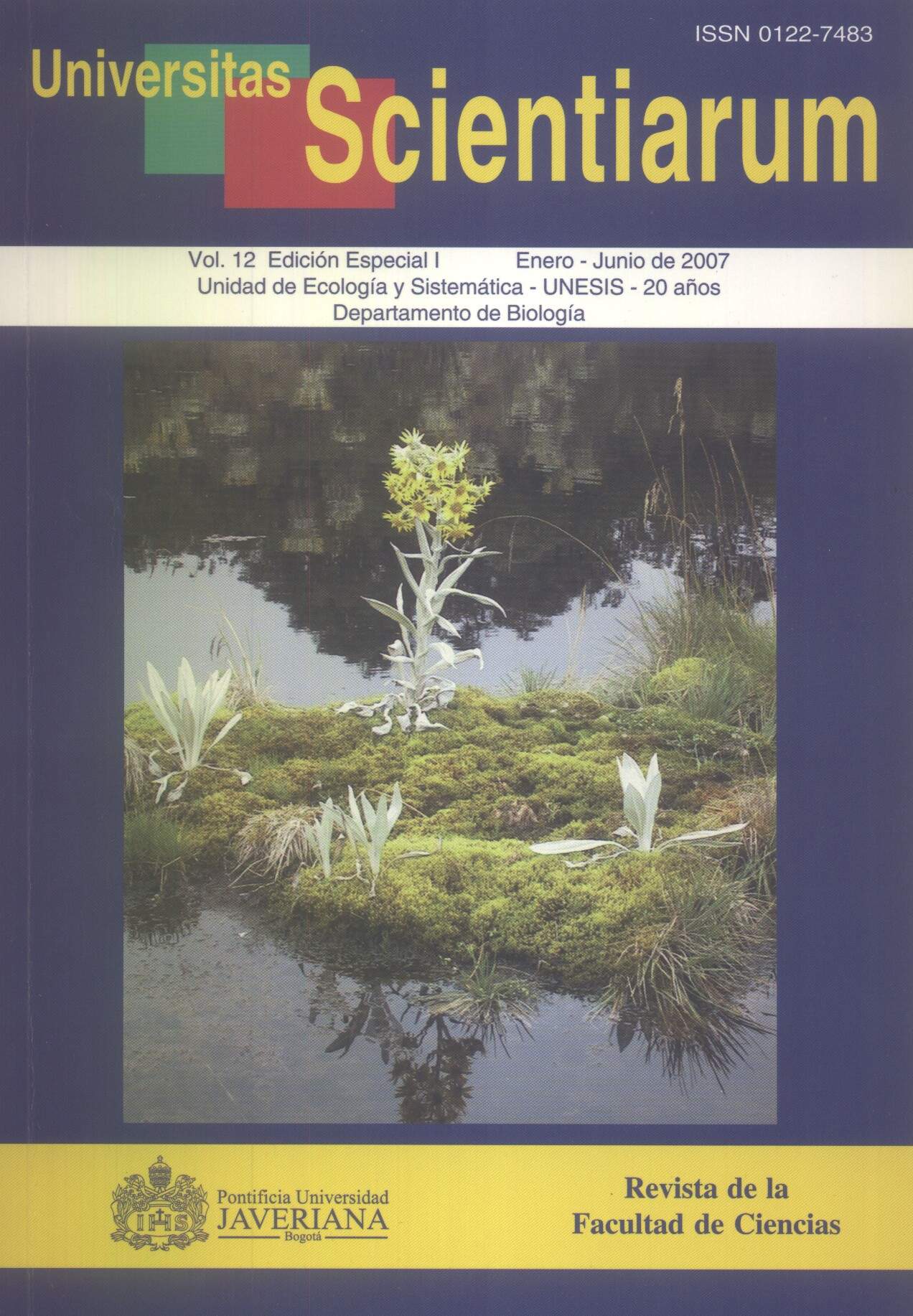Abstract
Si bien para algunas especies del género Brassia se ha reportado el síndrome de polinización por engaño, específicamente para Brassia antherotes no existían estudios. Por esta razón, se observó la fenología reproductiva de B. antherotes en una selva relictual en Quimbaya, Quindío. La población estudiada constó de 60 individuos localizados entre los 0.5-30 m de altura sobre los forófitos. Durante 7 meses se hizo un seguimiento de la fenología reproductiva. Su floración duró aproximadamente 6 semanas, con un pico de floración masiva en la cuarta semana, y un pico de polinización en la quinta semana. El corrimiento de las fenofases corresponde a un típico caso de polinización por engaño donde existe un efecto de densodependencia entre la abundancia de flores y los eventos de polinización. El 45% de la población floreció, el 6% de las flores fueron fecundadas, pero se presentó aborto de frutos en el 43,67% de éstas. Sin embargo, el porcentaje de viabilidad de las semillas (75%) se mantuvo dentro de los rangos reportados para la familia Orchidaceae. Tanto la antesis como la emisión de aromas por los osmóforos del callo son diurnos. Las flores tienen múltiples visitadores, y aparentemente un polinizador de la familia de Vespidae.Univ. Sci. is registered under a Creative Commons Attribution 4.0 International Public License. Thus, this work may be reproduced, distributed, and publicly shared in digital format, as long as the names of the authors and Pontificia Universidad Javeriana are acknowledged. Others are allowed to quote, adapt, transform, auto-archive, republish, and create based on this material, for any purpose (even commercial ones), provided the authorship is duly acknowledged, a link to the original work is provided, and it is specified if changes have been made. Pontificia Universidad Javeriana does not hold the rights of published works and the authors are solely responsible for the contents of their works; they keep the moral, intellectual, privacy, and publicity rights. Approving the intervention of the work (review, copy-editing, translation, layout) and the following outreach, are granted through an use license and not through an assignment of rights. This means the journal and Pontificia Universidad Javeriana cannot be held responsible for any ethical malpractice by the authors. As a consequence of the protection granted by the use license, the journal is not required to publish recantations or modify information already published, unless the errata stems from the editorial management process. Publishing contents in this journal does not generate royalties for contributors.



